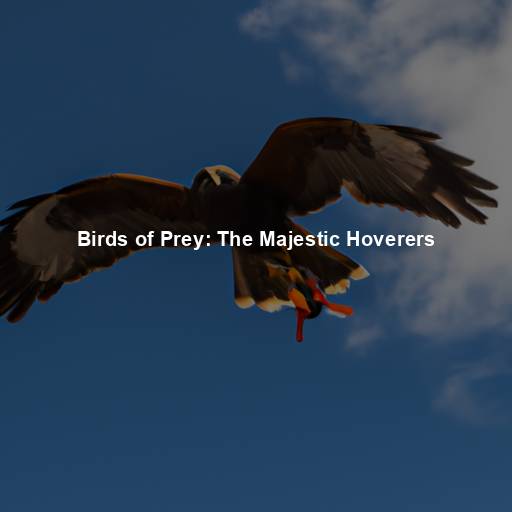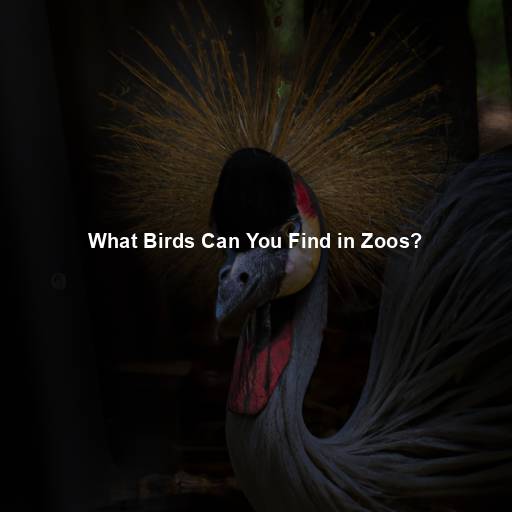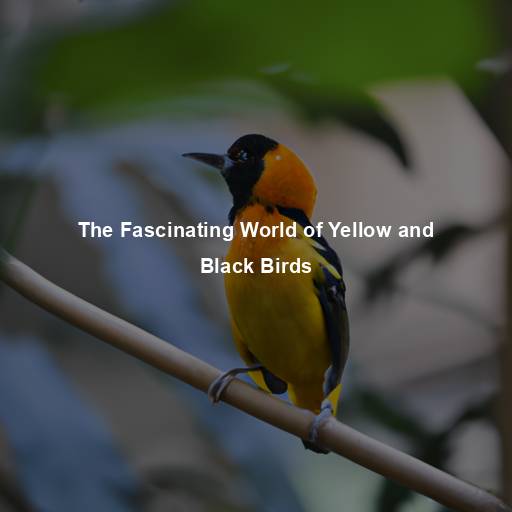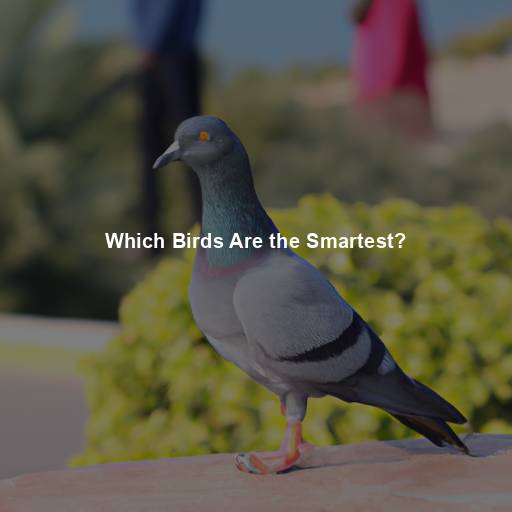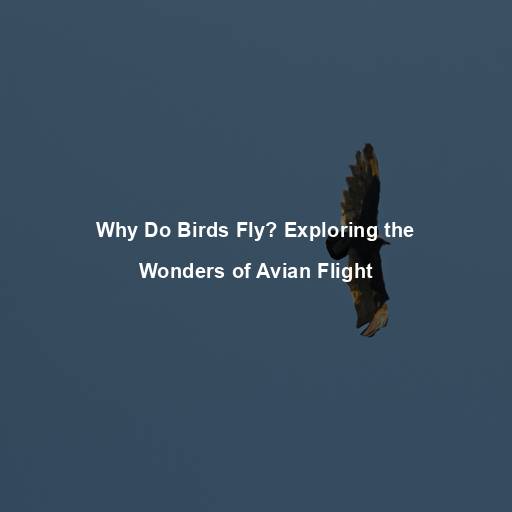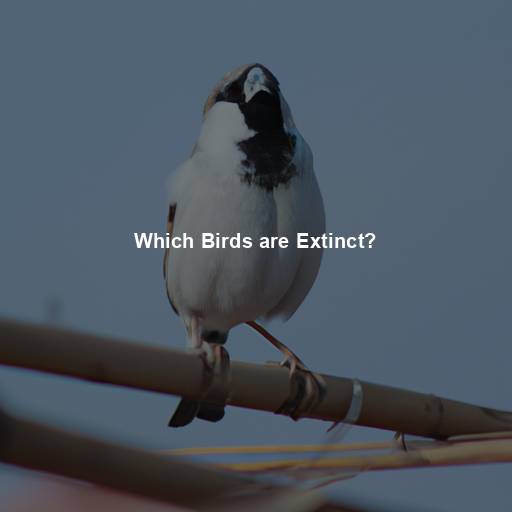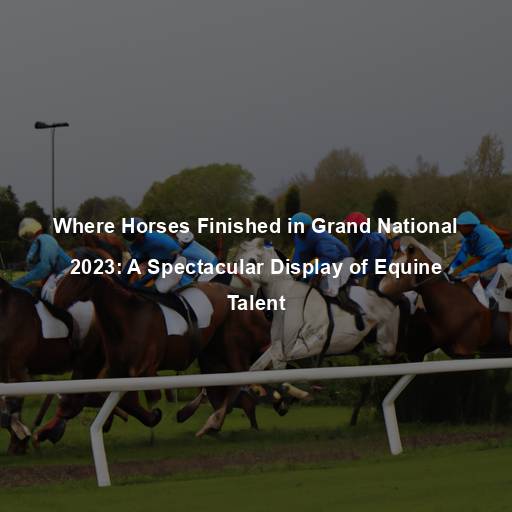Birds of Prey: The Majestic Hoverers
Last Updated on July 9, 2023 by Evan
Birds of prey, also known as raptors, have always captivated the human imagination with their awe-inspiring beauty and impressive hunting skills. These magnificent creatures are characterized by their keen eyesight, powerful talons, and hooked beaks. While most birds of prey are known for their soaring flight and swift dives, there is a specific group among them that possesses a unique ability: the power to hover. In this article, we will delve into the world of hovering birds of prey, exploring their remarkable adaptations, hunting techniques, and the species that possess this extraordinary skill.
Contents [hide]
- 1 The Art of Hovering: Unveiling the Mystery
- 2 Masters of the Sky: Hovering Hunters
- 3 Birds of Prey that Hover: A Closer Look
- 4 The Wonders of Hovering Birds of Prey
- 5 Conservation Challenges and Efforts
- 6 The Wonder Continues: Discovering More about Hovering Birds of Prey
- 7 FAQs – What Birds of Prey Hover
The Art of Hovering: Unveiling the Mystery
Hovering is a fascinating behavior observed in certain birds of prey, allowing them to remain stationary in mid-air, defying gravity with apparent ease. Unlike other birds, which rely on forward momentum to stay aloft, hoverers possess specialized adaptations that enable them to maintain a stable position in the sky. This remarkable ability opens up new possibilities for their hunting strategies and habitat choices.
Adaptations for Hovering
Hovering birds of prey possess unique anatomical and physiological adaptations that set them apart from their soaring counterparts. Their wings are shorter and broader, providing increased maneuverability and lift during stationary flight. Additionally, their tails are often more rounded, aiding in stability during hovering. These adaptations, combined with their exceptional muscle control, allow them to maintain precise positions in the air.
The Physics Behind Hovering
Hovering is made possible by the interplay of various physical forces. Birds of prey generate lift through the rapid flapping of their wings, creating a vertical force that counteracts gravity. By adjusting the angle and shape of their wings, they can control the magnitude and direction of this force. The complex choreography of wing movements and adjustments allows these birds to maintain their position in the sky, even in the face of strong winds or turbulent conditions.
Masters of the Sky: Hovering Hunters
The ability to hover grants birds of prey a unique advantage when it comes to hunting. It allows them to survey their surroundings meticulously, scanning the ground for potential prey with unrivaled precision. Hoverers can maintain a fixed position while scrutinizing the landscape, giving them a strategic vantage point from which to launch their attacks.
Hunting Techniques
The ethereal prowess of birds of prey never fails to astonish, especially when it comes to their hunting techniques. Among the most remarkable strategies is the art of “kiting,” a mesmerizing display of precision and adaptability. By gracefully suspending themselves in mid-air, these majestic creatures tap into the wind’s whimsical dance, effortlessly suspended with an aura of perplexing power. From this celestial perch, they cast their keen eyes upon the world below, swiftly descending like avian lightning when a potential meal catches their gaze.
Specialized Diets
When it comes to the avian world, it’s a smorgasbord of gustatory choices. Take the Osprey, for example, a true piscivore with an insatiable appetite for underwater delicacies. With eyes keenly scanning the aquatic landscapes, these feathered acrobats dive effortlessly into the depths in pursuit of their elusive fishy treats. On the flip side, the likes of the Eurasian Sparrowhawk and the Northern Harrier showcase their aeronautical skills in snatching airborne mammals and birds, skillfully employing their hovering talents to secure their mid-air meals.
Birds of Prey that Hover: A Closer Look
In the realm of avian wonders, behold the enigma of hovering, a talent not bestowed upon every majestic bird of prey. Yet, treading the realm of stillness within the vast expanse of the sky, there exist a few remarkable specimens that captivate with their ethereal abilities. Let us embark upon a journey of discovery, unravelling the mystique that shrouds these avian virtuosos and uncovering the distinct traits that set them apart from their soaring brethren.
American Kestrel (Falco sparverius)
In the vast expanse of North America, a tiny yet formidable creature reigns supreme – the American Kestrel. Known by some as the Sparrow Hawk, this raptor captivates all who lay eyes on it. Its vibrant plumage, a dazzling display of nature’s paintbrush, draws attention like a disco ball in a crowded room. But do not be fooled by its beauty, for within its small frame lies a potent predator, capable of defying gravity itself.
Common Kestrel (Falco tinnunculus)
The mesmerizing Common Kestrel has earned a prestigious reputation as a master of the skies, gracing continents like Europe, Asia, and Africa with its bewitching presence. Its awe-inspiring talent to gracefully hover in mid-air for seemingly endless moments has left spectators in utter wonderment. With its sharp, discerning vision, this avian virtuoso adeptly locates unsuspecting tiny creatures – be they mammals, birds, or insects – lurking below. Skillfully executing its lightning-swift descent, the Common Kestrel unleashes an awe-inspiring strike, leaving us all fortunate witnesses to its unparalleled marksmanship.
Eurasian Sparrowhawk (Accipiter nisus)
The captivating Eurasian Sparrowhawk, a marvelously adaptive creature spanning across Europe and Asia, astounds us with its bewildering hunting techniques that effortlessly blend graceful hovering and swift low-level flight. With an impressive display of agility and cunning, this avian wonder adeptly startles unsuspecting prey by freezing mid-air, only to pounce upon them with unexpected force. Its remarkable ability to hover grants it unparalleled access to densely vegetated regions, guaranteeing triumph in its quest for sustenance. The Eurasian Sparrowhawk truly embodies the epitome of nature’s enigmatic prowess.
Osprey (Pandion haliaetus)
The mesmerizing Osprey, known affectionately as the Fish Hawk, is a captivating creature that effortlessly navigates the ethereal realm of hunting beneath the waves. Thriving in various corners of the world, this awe-inspiring bird has undergone remarkable adaptations to equip itself for a life centered around piscine pursuits. Utilizing its extraordinary reversible outer toes and spiky footpads, the Osprey artfully secures its slippery prey, displaying an unmatched agility even while suspended in mid-air. Its enigmatic hovering prowess grants it the power to survey vast bodies of water, deftly locate unsuspecting fish, and execute impeccably calculated dives to seize its aquatic target.
The Wonders of Hovering Birds of Prey
The mesmerizing skill of hovering possessed by birds of prey never fails to captivate both bird enthusiasts and researchers, leaving them in a state of awe and wonder. These majestic creatures have undergone a remarkable transformation, allowing them to dominate the skies with incredible elegance and unwavering accuracy. Unraveling the mysteries behind their ability to hover offers a glimpse into the diverse and complex tactics employed by these extraordinary hunters. So, the next time you find yourself gazing upward and catching sight of a hovering raptor, take a moment to reflect on the sheer magic and mastery that unfolds in the mid-air.
Hovering birds of prey play a vital role in maintaining the ecological balance and health of ecosystems they inhabit. Their hunting prowess helps regulate populations of small mammals, birds, and insects, preventing unchecked growth that could disrupt the delicate equilibrium of the environment. By controlling prey populations, these raptors contribute to the overall stability and biodiversity of their habitats.
Rodent Control
In the ever-changing tapestry of nature’s dance, the realms of the sky are graced by the presence of mighty avian predators. Amongst this illustrious troupe, the Northern Harrier and the Barn Owl stand out, equipped with unsurpassed aerial prowess. Their feeding habits, intertwined with the delicate balance of nature, hold an enigmatic power – for they favor the consumption of small rodents, unyielding in their destructive potential.
In an extraordinary twist of fate, these hovering raptors emerge as unlikely saviors for humanity’s agricultural endeavors. In their tireless pursuit of sustenance, they become integral partners with farmers and land managers in combating the ravages of rodent infestations. Strikingly, their contribution doesn’t stop at protecting the crops from devastation; it allows a sanctuary where harmful pesticides take a backseat, as the hovering hunters take the center stage.
Through this marvel of coexistence, a brilliant tapestry of harmonious survival unfolds. These feathered sentinels render a natural form of pest control, a living embodiment of balance in action. As their wings flutter overhead, they not only safeguard agricultural productivity but also nourish the intricate fabric of the entire ecosystem, reminding us of nature’s unfathomable wisdom.
Predator-Prey Relationships
As majestic birds of prey hover above, the very fabric of the ecosystem becomes a tapestry of twists and turns. Their mere presence sets off a chain reaction, a dance of predator and prey intertwined. Witness the drama unfold as these hunters shape the fate of their unsuspecting victims, altering their every move and their very homes. Life within the ecosystem takes on a new rhythm, a burst of unpredictability where abundance and distribution hang in the balance.
Indicator Species
The graceful presence of birds of prey soaring high above us not only captivates our attention but also carries a deeper message about the state of our environment. These majestic creatures possess an innate sensitivity to the adverse effects of habitat degradation and pollution, making them invaluable environmental indicators. As their populations decline, it serves as a perplexing wake-up call, signaling potential ecological imbalances like habitat loss, pollution, or the diminishing numbers of their prey. By prioritizing the conservation of these aerial wonders, we can unlock a cascade of benefits that ripple through the entire ecosystem, ensuring its vitality and ability to withstand the challenges it faces.
Conservation Challenges and Efforts
Hovering birds of prey, with their awe-inspiring adaptations and crucial role in the ecosystem, find themselves grappling with a myriad of perplexing challenges that cast ominous shadows over their future. The loss of their natural habitats, coupled with the detrimental effects of pesticide use, relentless persecution, and the unforgiving impact of climate change, pose tangible threats to their very existence. In the face of such adversities, it becomes imperative for us to rally together, uniting our conservation endeavors to safeguard these majestic creatures and secure their rightful place in our world for generations to come.
Habitat Preservation
Protecting and preserving suitable habitats for hovering birds of prey is crucial for their survival. These habitats should encompass a diverse range of ecosystems, including grasslands, wetlands, forests, and coastal areas, to accommodate the specific needs and preferences of different species. Conservation organizations and land managers work tirelessly to establish protected areas, restore degraded habitats, and promote sustainable land use practices to safeguard these habitats for future generations.
Mitigating Pesticide Impacts
The use of pesticides, particularly those with persistent and bioaccumulative properties, poses a significant threat to hovering birds of prey. These chemicals can accumulate in the food chain, leading to reproductive issues and population declines. To mitigate pesticide impacts, integrated pest management strategies that prioritize non-chemical control methods and reduce reliance on harmful pesticides are essential. Educating farmers, policymakers, and the public about the potential dangers of pesticides to wildlife and promoting alternative approaches fosters a more sustainable coexistence between agriculture and hovering raptors.
Public Awareness and Education
When it comes to safeguarding our soaring feathered friends, it’s paramount that we illuminate the significance of hovering birds of prey. In order to disentangle any misguided beliefs or dismissive attitudes surrounding these majestic raptors, education and outreach must take center stage. By captivating communities, schools, and nature enthusiasts through the wonders of bird-watching, immersive workshops, and proactive conservation initiatives, we can ignite a profound reverence and custodianship for these awe-inspiring creatures. By instilling a shared dedication to preserving and cherishing hovering birds of prey and their habitats, we can chart a course toward a brighter future.
The Wonder Continues: Discovering More about Hovering Birds of Prey
The realm of hovering birds of prey is a vast tapestry of wonderment and intrigue. With each species boasting its own tale to tell, the intricacies of their lives and habitats offer an endless trove of exploration and revelation. Plummeting into the depths of knowledge, we unravel the secrets of their ecological intricacies, the enigmatic dance of their behavior, and the urgent call for their conservation. It is imperative that we embrace the marvel and splendor of these extraordinary creatures, safeguarding their airborne artistry and nurturing their pivotal role in our interconnected natural tapestry for generations to come.
Note: The information provided in this article serves as a general overview of hovering birds of prey and is not intended to be an exhaustive or comprehensive guide. Further research and consultation with experts are encouraged for a more in-depth understanding of specific species and conservation efforts.
FAQs – What Birds of Prey Hover
What is hovering in birds of prey?
Hovering is a flight technique used by certain birds of prey to maintain a stationary position in the air by flapping their wings rapidly and maintaining a fixed position relative to the ground. Instead of gliding or soaring, these birds can hover in mid-air, allowing them to focus on a particular target or spot without moving.
Which birds of prey are known for hovering?
Some of the most well-known birds of prey that are known for their exceptional hovering capabilities include the American Kestrel, also known as the Sparrow Hawk, the Common Kestrel, the Northern Harrier, the Osprey, and certain species of the Buzzard family like the Rough-legged Buzzard and the Red Kite.
How do birds of prey hover?
Witness the majestic artistry of birds of prey as they defy gravity with their remarkable hovering abilities. These avian marvels employ a unique blend of aerial techniques, deftly combining forward flight with rapid wing flapping to counteract the pull of gravity, allowing them to effortlessly hang suspended in mid-air. To maintain their delicate balance and control, these masterful creatures skillfully adjust the position of their wings, the graceful movements of their tails, and even the angle of their bodies, creating a mesmerizing display of flight mastery. Step into the awe-inspiring world of these airborne acrobats and behold the wonder of nature’s ultimate aerial performers.
Why do birds of prey hover?
Birds of prey engage in hovering for a variety of reasons. One primary purpose is to locate and target prey more accurately. By hovering, these birds can focus their keen eyesight on a small area, allowing them to detect subtle movements of potential prey on the ground, in the water, or even in the air. Hovering also grants them the advantage of surprise, enabling them to launch a swift and precise attack once they spot a suitable target.
How long can birds of prey hover?
Have you ever wondered how long birds of prey can actually hover in mid-air? Well, it turns out that the answer is not quite as straightforward as one might think. You see, the duration of their hovering abilities can be quite variable, depending on a multitude of factors. From the species of the bird to the ever-changing environmental conditions, these magnificent creatures can maintain a state of weightless suspension for anywhere between a fleeting few seconds to several awe-inspiring minutes. The interplay of elements such as wind speed, thermals, and even the bird’s own energy reserves can all contribute to the perplexing enigma of how long they can sustain this mesmerizing display of stationary flight. So next time you find yourself gazing skywards, don’t be surprised if the birds of prey leave you bursting with curiosity and amazement.
Are all birds of prey capable of hovering?
Not all birds of prey are capable of hovering. Hovering requires specific adaptations and flight capabilities that are not present in all species. While several raptors have mastered this technique, there are many others that rely more on soaring, gliding, or perching when it comes to hunting or capturing prey. Each species has developed its own set of hunting strategies based on its unique physical characteristics and ecological niche.

